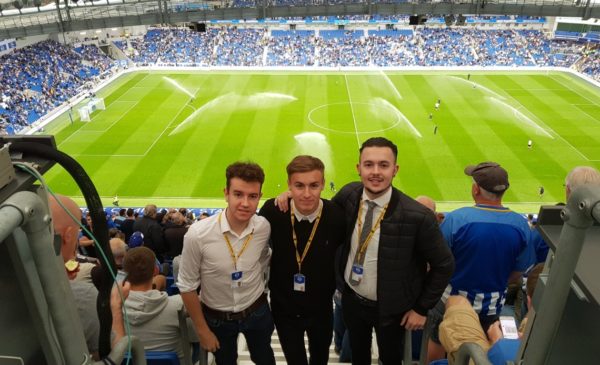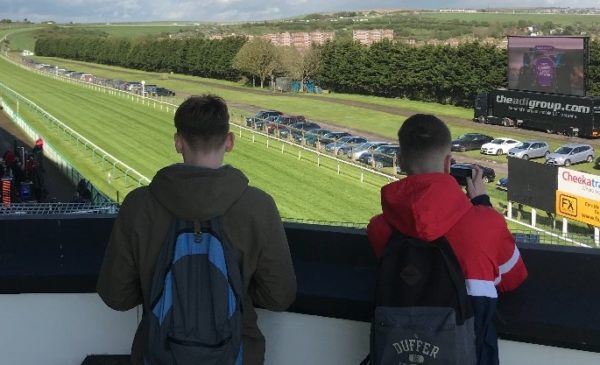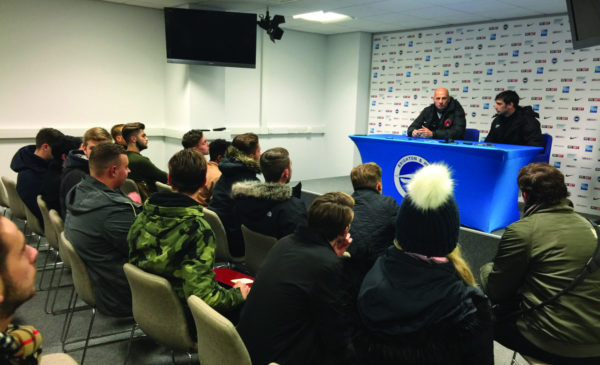Club for a Fiver depicts the behind-the-scenes workings of Leyton Orient during their 1994/95 season which saw the team relegated from the Second Division. From the start of the documentary, it is clear to see that its purpose is not based on improving the image of Leyton Orient and their manager John Sitton, with the cameras there to capture all the gory details. The audience is presented with the grim reality faced by many lower league teams. The club is struggling finically which is coupled with the team’s poor performances during that season. Instead of attempting to paint the club in a positive light, Open Media chooses to capture gritty realism over gentle fabrication to protect the club’s image. The club is presented as one in turmoil and strife, struggling to survive.
No more is this realism typified in the documentary by the depiction of Sitton. The struggling manager fails to restrain himself in front of the cameras, instead offering the audience explicit outburst after explicit outburst. At one point during the documentary, Sitton goes as far to offer to fight one of his players, criticise the board, sack club legend and fan favourite Terry Howard in the dressing room as well as remark upon potential job opportunities in Kuwait and Cyprus. For the audience, this communicates a sense of blunt authenticity. The manager is clearly unaffected by the presence of the camera and is not putting on an artificial performance. He does not tone down his antics rather he enhances them.
This paints Sitton as either naïve or brutally honest, willing to speak his mind despite the potentially dangerous consequences for his own career and his image. However, Sitton’s openness is the documentary’s gain. It signposts a deep sense of truthfulness and honesty as well as magnifying that the documentary is the anthesis of a public relations exercise. By the end of the documentary, there is an air of Shakespearian tragedy, with Sitton reflecting on his inevitable sacking as well as what had transpired through such a disastrous season. After the release of the documentary, Sitton failed to find another job in football, prematurely ending his managerial career. The authenticity found within the documentary was so stark, it had life altering effects on its participants.
Furthering this, the documentary pays close attention to proposed takeovers of the club. At the start of the documentary, the audience is informed of the club’s perilous finical predicament due to chairman Tony Wood’s business dealings in Rwanda suffering because of the country’s civil war. Subsequently, Leyton Orient were banned from signing players during the season, with their squad totalling 13 players to choose from. Alongside this the club could not afford to pay current player wages which were paid by the PFA.
By the end of the documentary, Barry Hearn completes a takeover of the club. Not only is authenticity articulated through Sitton but also through the corporate turmoil the club faces throughout the 94/95 season. The accessibility viewers get to often hidden aspects of football clubs enhances the legitimacy and accuracy of what they are watching.
As Club for a Fiver was made in the “Pre-All or Nothing Era”, it provides an important marker for the evolution and development of public relations in sports. Despite being successful at capturing the backstage dealings at some of the biggest teams across a variety of sports such as Manchester City and the Dallas Cowboys. Yet a fair criticism that can be made against these documentaries is that they sacrifice a sense of realism and objectivity in exchange for a positive portrait of the respective teams. Contemporary professional sports environments are determined to maintain a sense of control of their public image. Club own media is becoming more prominent while independent sports journalism suffers because of this change in approach.
These modern documentaries such as All or Nothing become vehicles for maintaining as well as extending this sense of image control. The respective clubs can use the platform to help develop and polish their image to how they want to be perceived in the wider sporting world. Alongside this, sports ever increasing commercialisation forces clubs to take this public relation heavy approach where their brand become paramount to success. If clubs dismiss this outlook, then they risk becoming finically adrift from their competitors.
With this context, Club for a Fiver creates an interesting contrast between the tell all nature of the documentary where realism is prioritised above all, compared with All or Nothing where maintaining a positive public image is crucial. In the modern environment, a Club for a Fiver style documentary would not be endorsed by a professional sports club. Its value lies as form of historical artifact, highlighting the evolution of football and its relationship with public relations and image.








